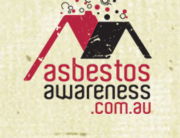Workplace Health and Safety Queensland has published a new asbestos guide for tradies and contractors involved in maintenance, repair or renovation work of concrete pool shells.
The guide shows how to identify swimming pools and spas with Marblesheen (Marblelite) finishes that may contain asbestos, and how to prevent exposure during work. Marblesheen is a decorative coating applied to concrete pool shells and is primarily composed of white cement and white marble chips. If it was applied prior to 1990, it may include asbestos.
The only way to confirm an asbestos coating is to have a sample analysed by a National Association of Testing Authorities accredited laboratory. Prior to any maintenance, repair or renovation work occurring, testing should be undertaken for:
- Marblesheen coated pools built before 1990 (all Marblesheen pools in this category should be assumed to contain asbestos)
- pools built before 1990 which have may been resurfaced (leaving the original Marblesheen coating in place underneath).
If Marblesheen coating is in good condition and not disturbed, it is low risk as the asbestos fibres are bound to the cement. However, aging can result in surface deterioration, and leaks. Complete removal of the Marblesheen is often necessary if the deterioration is extensive, or if cracks or rust repairs to the pool shell require surface removal to complete the repair. Complete resurfacing requires at minimum removal of the old surface from around fittings and tiles to enable a flush finish for the new surface.
Remember that any work involving the removal or disturbance of Marblesheen coatings must be done in accordance with Queensland asbestos laws. Removal or repair of Marblesheen coating would normally require the use of power tools, but if the material contains asbestos, it is illegal to use them (unless strictly controlled) because they generate airborne asbestos fibres.
Also, all debris must be double bagged or double wrapped in 200µm plastic and dumped at approved waste disposal facilities. Weight limits may apply for transported asbestos waste.






Leave A Comment